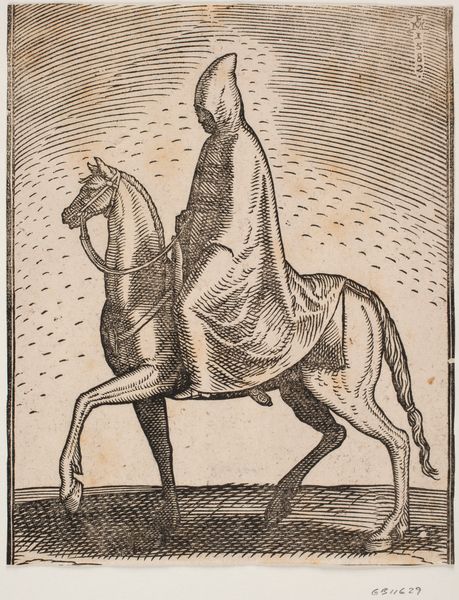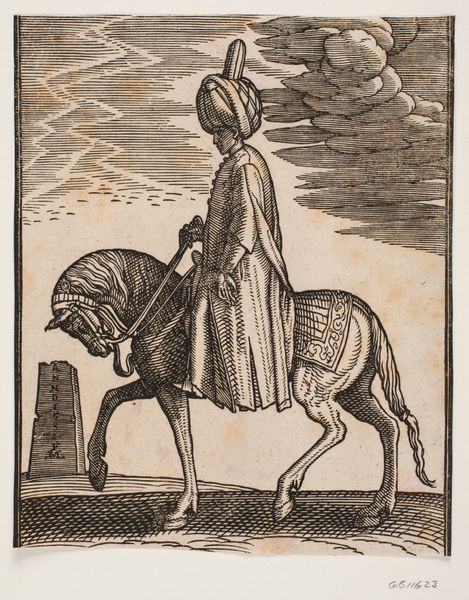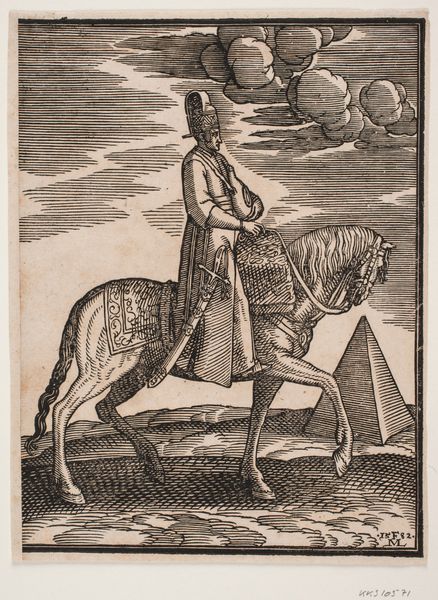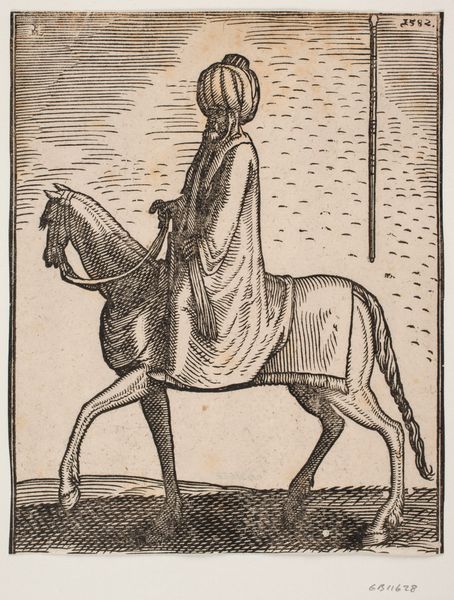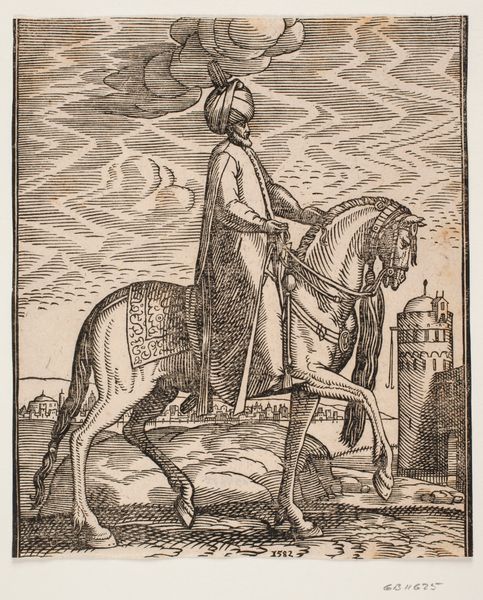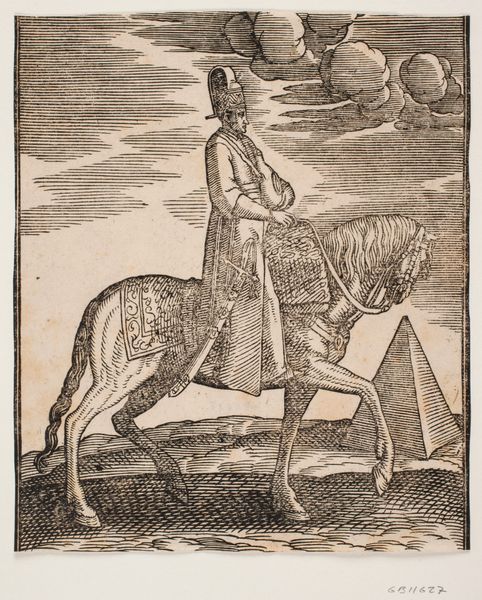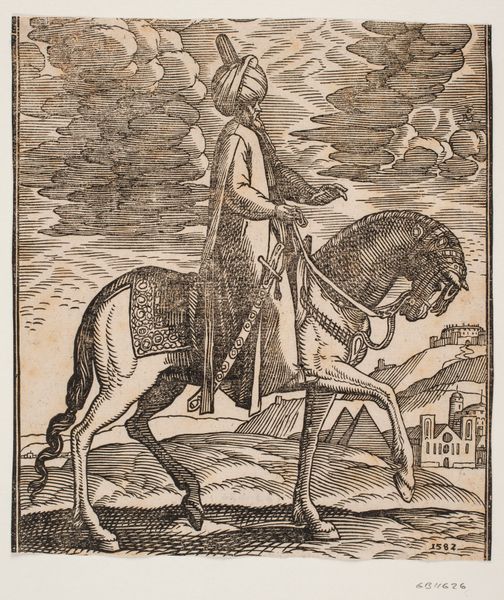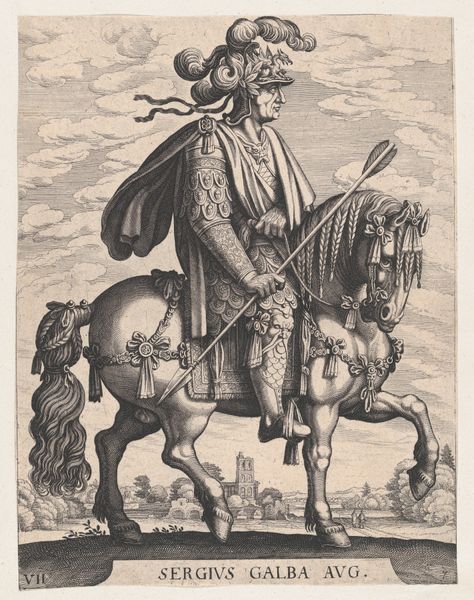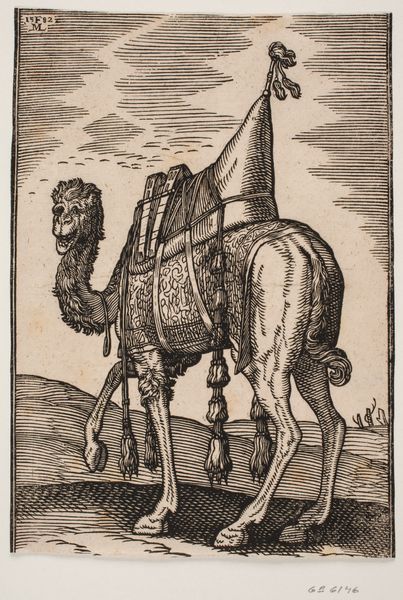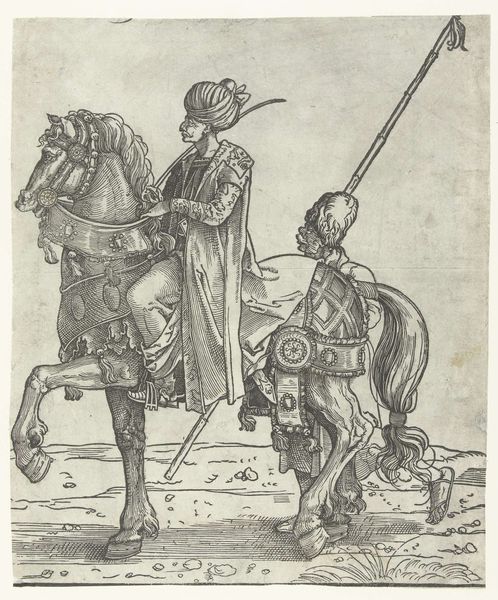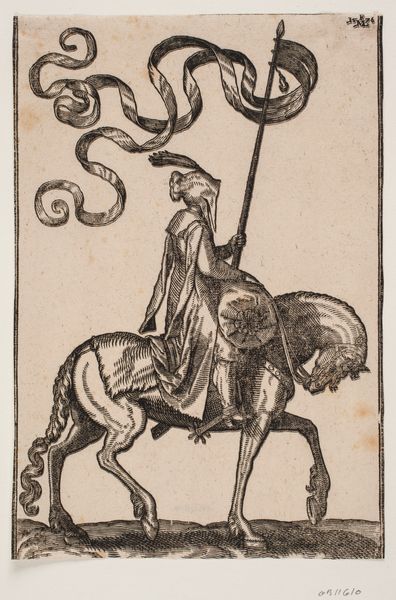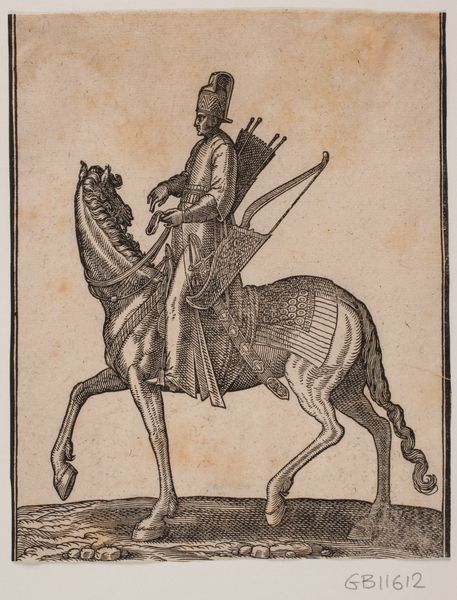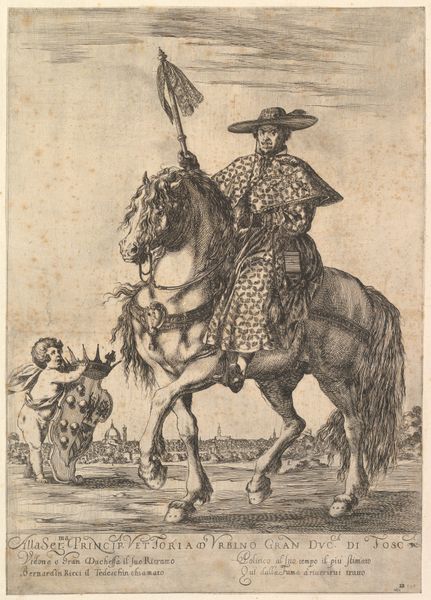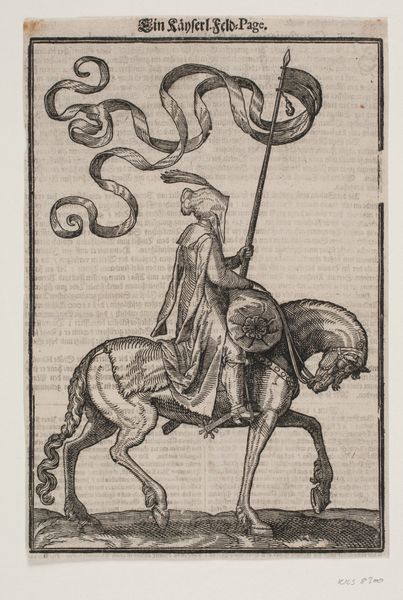
Rytter iklædt lang frakke og græskarlignende hovedbeklædning, profil mod v.; under kappen anes et sværd; bag hestens forben ses en cylindrisk sokkel bærende en kugle 1582
0:00
0:00
print, woodcut, engraving
#
narrative-art
# print
#
pencil sketch
#
figuration
#
11_renaissance
#
woodcut
#
line
#
genre-painting
#
history-painting
#
engraving
Dimensions: 210 mm (height) x 168 mm (width) (bladmaal)
Curator: Let’s turn our attention to this fascinating print, “Rytter iklædt lang frakke og græskarlignende hovedbeklædning” or “Rider Dressed in a Long Coat and Pumpkin-Like Headgear,” created in 1582 by Melchior Lorck. Editor: My first impression is a sense of subdued, almost theatrical solemnity. The meticulous lines and somber tone create an atmosphere that is both captivating and slightly unsettling. What do you make of it? Curator: The striking formal element here is clearly the contrast between the meticulous detail in the horse and rider and the rather minimal background. The composition leads the eye from the spherical object and plinth in the lower left, diagonally up through the rider and then fades upward toward the background clouds, which is actually quite a conventional technique. The density of the line work creates dimension despite the relative flatness of the background, so typical of woodcuts and engravings of this era. Editor: I see it rather as a commentary on power and identity during the Renaissance. The rider's peculiar headgear immediately draws attention, defying expectations. This can be interpreted as a visual representation of the changing power dynamics in 16th-century Europe. He’s hiding a sword beneath the coat; the odd headgear gives this person an exaggerated, almost cartoonish appearance. Curator: A sharp reading. The lines around his face give him a menacing affect, for sure. From a technical standpoint, Lorck has used cross-hatching very effectively to create areas of shadow and volume, particularly in the drapery of the rider's coat. Note also how economical his use of line is elsewhere. Editor: I wonder, who was this rider? Was it a depiction of someone from Ottoman society? How much agency did Lorck have over how that identity was created and projected to the masses? Given how exoticised non-European figures tended to be, what impact might it have had on its original viewers? Curator: Those are very important points, placing the artwork into a necessary historical perspective. Considering all these formal and contextual aspects deepens our appreciation, and your comments suggest just how provocative Melchior Lorck's image still remains today. Editor: Absolutely. These works remind us of the complex narratives of the Renaissance, seen from various, sometimes conflicting, vantage points.
Comments
No comments
Be the first to comment and join the conversation on the ultimate creative platform.
